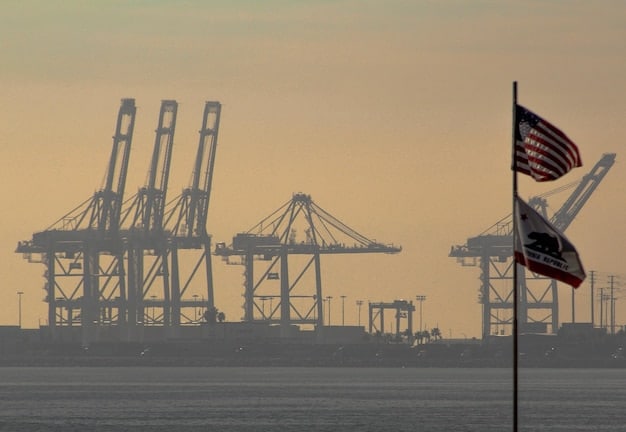Navigating Trade Winds: Impacts on US Businesses & Workers

New trade agreements significantly impact American businesses and workers by altering import/export dynamics, potentially creating new job opportunities while simultaneously displacing others, and reshaping the competitive landscape across various sectors.
New trade agreements are constantly reshaping the global economy, and deciphering their implications for American businesses and workers is crucial. How exactly will these agreements affect your industry, your job, and the overall economic landscape of the United States? This is how will the new trade agreements affect American businesses and workers.
Understanding the Framework of New Trade Agreements
Trade agreements are formal pacts between countries designed to regulate and promote commerce. These agreements can range from bilateral deals between two nations to multilateral agreements involving many countries.
Understanding their framework is essential before assessing how they impact American businesses and workers. They dictate tariffs, quotas, and other trade barriers, impacting the flow of goods, services, and investments.
Types of Trade Agreements
There are various types of trade agreements, each with its own specific characteristics and objectives.
- Bilateral Agreements: These are agreements between two countries, focusing on reducing trade barriers and enhancing economic cooperation.
- Regional Agreements: These involve multiple countries within a specific geographic area, such as the North American Free Trade Agreement (NAFTA), now replaced by the United States-Mexico-Canada Agreement (USMCA).
- Multilateral Agreements: These are global agreements involving a large number of countries, such as those under the World Trade Organization (WTO).
Each type of agreement presents different opportunities and challenges for American businesses and workers.
Key Provisions in Trade Agreements
Trade agreements typically include several key provisions that directly affect businesses and workers.
- Tariff Reductions: Agreements often aim to reduce or eliminate tariffs on goods traded between member countries, making imports cheaper and exports more competitive.
- Intellectual Property Rights: They also address intellectual property rights, ensuring that patents, trademarks, and copyrights are protected in member countries.
- Investment Regulations: They may include provisions that regulate foreign investment, impacting the flow of capital and the operations of multinational corporations.
- Labor and Environmental Standards: Modern trade agreements often incorporate labor and environmental standards, seeking to promote fair labor practices and sustainable development.
Understanding these provisions is critical for businesses and workers to adapt to the changing trade landscape.
In conclusion, grasping the framework and key provisions of new trade agreements is essential for assessing their potential impact. By understanding the types of agreements and the provisions they contain, American businesses and workers can better anticipate and navigate the evolving trade environment.
The Immediate Effects on American Businesses
New trade agreements create a ripple effect across various sectors. Some industries may experience a boom in exports, while others face increased competition from imports.
The immediate effects are often felt in terms of market access, production costs, and overall competitiveness.

Increased Market Access
One of the most immediate benefits of new trade agreements is increased market access for American businesses. By reducing tariffs and other trade barriers, these agreements open up new opportunities for companies to sell their goods and services abroad.
This can lead to higher sales, increased production, and job creation in export-oriented industries.
Changes in Production Costs
Trade agreements can also affect the production costs of American businesses. For example, lower tariffs on imported materials and components can reduce the cost of manufacturing goods in the United States.
On the other hand, increased competition from imports can put pressure on companies to lower their prices, potentially squeezing profit margins.
Impact on Specific Industries
The impact of new trade agreements can vary significantly across different industries. Some sectors, such as agriculture and technology, may benefit from increased export opportunities.
- Agriculture: Trade agreements can open up new markets for American farmers, allowing them to sell their products to a wider range of consumers.
- Technology: These agreements can promote the cross-border flow of data and technology, fostering innovation and growth in the tech sector.
- Manufacturing: Manufacturing may face a harder time with increasing competition.
Meanwhile, other sectors, such as manufacturing, may face increased competition from foreign producers.
In conclusion, new trade agreements have immediate effects on American businesses, influencing market access, production costs, and industry-specific dynamics. Understanding these effects is crucial for businesses to adapt and thrive in the changing trade landscape.
Job Creation and Displacement
One of the most debated aspects of trade agreements is their impact on employment. While some argue that they lead to job creation, others fear job losses due to increased competition.
The reality is often more complex, with both positive and negative effects on employment depending on the industry and region.
The Upsides of Trade: Opportunities for Growth
Trade agreements can boost particular industries, resulting in hiring spikes. This can happen when new markets open up, creating more demand for specific goods and services.
This is often the case in sectors that are very advanced or well-positioned to compete globally.
The Downsides of Trade: The Real Risk of Job Losses
The hard truth is that some industries can take a hit, leading to job cuts. Companies might move production to countries where it’s cheaper to do things, which means jobs that were once here go somewhere else.
We’ve seen this happen in manufacturing, where factories have shut down because they couldn’t keep up with lower costs abroad.
Strategies for a Changing Workforce
To lessen the blow and help people adjust, there are a few strategies that can really make a difference.
- Retraining Programs: These are super important for workers who need to learn new skills to stay relevant in today’s job market.
- Educational Initiatives: Offering education opportunities can help people move into fields that are growing, not shrinking.
- Government Support: Government programs can provide support to workers who have lost their jobs, providing income and assistance while they look for new opportunities.
For example, the Trade Adjustment Assistance (TAA) program in the U.S. offers aid to workers who lose their jobs because of trade.
In summary, trade agreements can lead to both job creation and displacement, depending on the industry and region. To mitigate the negative effects of job losses, strategies such as retraining programs, educational initiatives, and government support are essential. These strategies can help workers adapt to the changing trade landscape and find new opportunities in growing sectors.
Impact on Wages and Labor Standards
The effect of trade agreements on wages and labor standards is a crucial concern for workers. These agreements can create pressures that affect wage levels and working conditions, both positively and negatively.
Understanding these effects is essential for ensuring fair labor practices and protecting workers’ rights.

Wage Stagnation and Decline
One of the challenges posed by trade agreements is the potential for wage stagnation or decline in certain sectors. Increased competition from countries with lower labor costs can put downward pressure on wages in the United States.
This can particularly affect industries where jobs can be easily outsourced or where there is significant competition from imports.
The Link to Labor Standards
Trade deals can be crafted to push for better working conditions. The idea is to nudge other countries to adopt fairer labor practices.
This often means things like safe workplaces, the right to form unions, and banning child labor.
Safeguarding Workers in the US
To protect American workers in the face of trade agreements, measures can be implemented to ensure fair wages and labor standards.
- Strong Enforcement Mechanisms: Strengthening enforcement mechanisms for labor laws and standards can help prevent exploitation and ensure that workers are paid fair wages.
- Investment in Education and Training: Investing in education and training programs can help workers develop the skills needed to compete in a global economy, increasing their earning potential.
In conclusion, trade agreements can impact wages and labor standards, potentially leading to wage stagnation or decline in certain sectors. However, they can also be used to promote fair labor practices and improve working conditions. To protect American workers, it is essential to implement measures that ensure fair wages, strengthen labor standards, and invest in education and training.
The Role of Government Policies
Government policies play a critical role in shaping the impact of trade agreements on American businesses and workers. These policies can range from trade regulations and tax incentives to workforce development programs and social safety nets.
They can either amplify the benefits of trade or mitigate its negative consequences.
Directly Supporting Business and Workers
The government can directly support its national business and workers, helping mitigate the damage that stems from new trade agreements.
- Trade Adjustment Assistance (TAA): TAA is a federal program that provides assistance to workers who have lost their jobs as a result of international trade. It offers retraining, income support, and job search assistance.
- Small Business Administration (SBA): The SBA offers resources and assistance to small businesses looking to expand into international markets, including export counseling and financing programs.
Building Resilience for the Future
To help American businesses and workers thrive in a competitive global economy, government policies can focus on building resilience and promoting innovation.
Investing in infrastructure, promoting research and development, and fostering a skilled workforce can enhance the competitiveness of American industries and create new opportunities for workers.
In conclusion, government policies play a crucial role in shaping the impact of trade agreements on American businesses and workers. By implementing policies that support affected workers, promote innovation, and foster a competitive business environment, the government can help ensure that the benefits of trade are widely shared and that the negative consequences are mitigated.
Future Outlook and Adaptation Strategies
As the global economy continues to evolve, trade agreements will remain a central feature of international relations. American businesses and workers need to adapt to the ongoing changes and prepare for the future.
Understanding the emerging trends and developing effective adaptation strategies is essential for success.
Anticipating Future Trends
The future of trade agreements is likely to be shaped by several key trends.
- Digital Trade: The rise of e-commerce and digital services is driving the need for new rules and regulations governing digital trade.
- Supply chain: Businesses can adapt to the changing trade landscape by diversifying their supply chains and investing in advanced technologies.
Adaptation in the US
Several adaptation strategies can help American businesses and workers thrive in the evolving trade environment.
- Lifelong Learning: Workers need to embrace lifelong learning and acquire new skills to remain competitive in a rapidly changing job market.
- Collaboration: Businesses can collaborate with educational institutions and workforce development organizations to ensure that training programs are aligned with industry needs.
Businesses and workers must remain flexible, proactive, and forward-thinking to navigate the challenges and opportunities presented by new trade agreements. By anticipating future trends and implementing effective adaptation strategies, they can thrive in the global economy and secure a prosperous future.
| Key Point | Brief Description |
|---|---|
| 📈 Market Access | New agreements can open up international markets for US businesses. |
| 💼 Job Impact | Some sectors may see job growth, while others face potential job losses. |
| ⚖️ Labor Standards | Agreements often include provisions to promote fair labor practices. |
| 🛡️ Government Role | Government policies can help mitigate negative impacts on workers. |
FAQ Section
▼
Trade agreements often aim to reduce or eliminate tariffs between member countries. This makes imported goods cheaper, benefiting consumers, and can increase exports for American businesses.
▼
The TAA program assists workers who lose their jobs due to international trade. It provides retraining, income support, and job search assistance to help them find new employment.
▼
Businesses can adapt by diversifying their supply chains, investing in advanced technologies, and focusing on innovation. This helps them remain competitive in the global market.
▼
Labor standards in trade agreements aim to promote fair labor practices, such as safe working conditions, the right to form unions, and the prevention of child labor in member countries.
▼
Trade agreements can put downward pressure on wages in sectors facing increased competition from countries with lower labor costs. However, they can also create opportunities for higher-skilled, higher-paying jobs.
Conclusion
In conclusion, new trade agreements have multifaceted effects on American businesses and workers. While they offer opportunities for increased market access and economic growth, they also pose challenges such as job displacement and wage pressures. Understanding these dynamics and implementing proactive adaptation strategies are essential for navigating the evolving trade landscape and ensuring a prosperous future for all.





